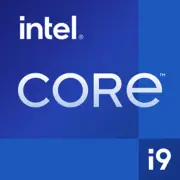Intel Core i9-9940X X-series

Intel Core i9-9940X X-Series: Guida a un mostro obsoleto ma ancora rilevante (2025)
Aprile 2025. Aggiornato in base al mercato attuale.
1. Caratteristiche principali: Architettura, processo tecnologico e prestazioni
Architettura e processo tecnologico
Il processore Intel Core i9-9940X, rilasciato nel 2018, è basato sull'architettura Skylake-X e fabbricato con un processo a 14 nm. Per il 2025, si tratta di una tecnologia obsoleta: i moderni chip Intel e AMD utilizzano processi da 5 a 7 nm. Tuttavia, all'epoca, i 14 nm permettevano di bilanciare prestazioni e dissipazione termica.
Core, thread e frequenze di clock
- 14 core / 28 thread — perfetto per carichi di lavoro multi-thread.
- Frequenza base: 3.3 GHz, massima in modalità turbo: 4.5 GHz.
- Cache L3: 19.25 MB — sufficiente per gestire carichi di lavoro complessi.
Prestazioni
- Geekbench 6: Single-Core — 1432, Multi-Core — 6701.
- A titolo di confronto, il Ryzen 9 5950X (16 core) ottiene circa ~1600/11500 (Single/Multi).
- Nei compiti single-thread è inferiore ai CPU moderni, ma le prestazioni multi-thread rimangono competitive.
Caratteristiche chiave
- Supporto per Intel Turbo Boost Max 3.0 per l'overclocking automatico.
- Tecnologia Hyper-Threading per ottimizzare il multitasking.
- Moltiplicatore sbloccato — potenziale per l'overclocking.
2. Schede madri compatibili
Socket e chipset
- Socket LGA 2066 — obsoleto, ma ancora presente nel mercato secondario.
- Chipset: X299 (raccomandato), oltre a C422 e altri meno funzionali.
Caratteristiche nella scelta
- Schede su X299 (ASUS ROG Rampage VI Extreme, MSI X299 Gaming Pro Carbon) supportano:
- Memoria DDR4 a 4 canali.
- Molteplici linee PCIe 3.0 (fino a 44) — rilevante per workstation con più GPU/NVMe.
- Prezzi per nuove schede (2025): da $250 (modelli base) a $400+ (modelli top).
- Consiglio: Cerca modelli con VRM potenziati (ad esempio, 8+ fasi) per un overclocking stabile.
3. Memoria supportata
Tipi e configurazioni
- DDR4 con supporto fino a 256 GB (8 slot × 32 GB).
- Frequenze: fino a 2666 MHz (senza overclock), ma molte schede consentono l'overclock fino a 3600+ MHz.
- Modalità a 4 canali — vantaggio rispetto alle piattaforme consumer (ad esempio, AM4).
Raccomandazioni per il 2025
- Scelta ottimale: 4 × 16 GB DDR4-3200 (64 GB) — equilibrio tra prezzo e prestazioni.
- DDR5 non è supportato — questo è il principale svantaggio per le applicazioni moderne che richiedono alta larghezza di banda.
4. Alimentatori: Calcolo per TDP 165 W
Requisiti di base
- TDP nominale — 165 W, ma con l'overclocking il consumo può raggiungere 250–300 W.
- Potenza minima dell’alimentatore: 750 W (considerando una scheda video potente, ad esempio, RTX 4080).
- Standard raccomandati: 80+ Gold o Platinum (efficienza ≥90%).
Esempi di alimentatori
- Corsair RM850x (2025): $140 — silenzioso, affidabile, 10 anni di garanzia.
- Be Quiet! Straight Power 11 1000W: $180 — riserva per un futuro upgrade.
Importante! Non risparmiare sull’alimentatore — l'elevato consumo energetico di CPU e GPU richiede una tensione stabile.
5. Pro e contro
Pro
- Potenza multi-thread — rendering, codifica, modellazione 3D.
- Compatibilità con X299 — upgrade di workstation più vecchie.
- Overclocking — potenziale per gli appassionati.
Contro
- Alto consumo energetico — 165 W contro 105 W del Ryzen 9 7900X.
- Processo tecnologico obsoleto — il calore richiede un sistema di raffreddamento potente.
- Mancanza di PCIe 4.0/5.0 — limitazione per NVMe ad alta velocità e GPU moderne.
6. Scenari d'uso
Attività lavorative
- Rendering 3D (Blender, V-Ray): 14 core operano più rapidamente rispetto ai CPU 8-core del 2023-2024.
- Video editing (Premiere Pro): Rendering di progetti 4K con effetti — 28 thread ridurranno i tempi di elaborazione.
- Virtualizzazione: Esecuzione di più VM senza rallentamenti.
Gaming
- Prestazioni medie nel 2025: In Full HD con RTX 4070 — 90-120 FPS (Cyberpunk 2077, Ultra).
- Punti deboli: Basso IPC (istruzioni per ciclo) rispetto ai Ryzen 7000/8000 — cali nelle scene CPU-bound.
Multimedia
- Streaming (OBS + gioco) — 28 thread gestiranno facilmente la codifica in x264.
7. Confronto con i concorrenti
AMD Ryzen 9 5950X (2020)
- 16 core / 32 thread, 7 nm, TDP 105 W.
- Geekbench 6: ~1600/11500.
- Pro: Efficienza energetica, supporto PCIe 4.0.
- Prezzo (2025): $350 (nuovo) — miglior rapporto qualità-prezzo.
Intel Core i9-13900K (2022)
- 24 core (8P+16E), 10 nm, TDP 125 W.
- Geekbench 6: ~2200/22000.
- Pro: Leader nei task single-thread.
Conclusione: l’i9-9940X perde in efficienza energetica e IPC, ma supera le novità economiche in multi-thread.
8. Consigli pratici per l'assemblaggio
Raffreddamento
- Minimo: 240 mm AIO (ad esempio, NZXT Kraken X63).
- Ottimale: 360 mm AIO o raffreddamento a liquido personalizzato.
Scheda madre
- Scegli modelli con dissipatori per VRM (ASUS Prime X299-A II).
Memoria
- 4 × 16 GB DDR4-3200 — attivazione della modalità a 4 canali.
Aggiuntivo
- Utilizza SSD NVMe (PCIe 3.0) per ridurre i colli di bottiglia.
9. Conclusioni finali: A chi si adatta l'i9-9940X nel 2025?
Per chi:
- Proprietari della piattaforma X299, desiderosi di aggiornarsi senza cambiare la scheda madre.
- Workstation economiche: Acquisto di CPU usata per $200-250 + nuova scheda X299 ($300) è più economico rispetto al passaggio a AM5/LGA 1700.
- Appassionati di overclocking: Esperimenti con l'overclocking su "hardware vintage".
Motivi per non acquistarla:
- Mancanza di supporto per DDR5 e PCIe 5.0.
- Elevato consumo energetico.
Alternativa: Ryzen 9 7900X ($450) o Intel Core i7-14700K ($400) — migliore IPC, PCIe 5.0, DDR5.
Verdetto finale: Intel Core i9-9940X — soluzione di nicchia per compiti specifici. Nel 2025 è rilevante solo per coloro che apprezzano il multi-core e non vogliono investire in una nuova piattaforma.
Di base
Specifiche della CPU
Specifiche della memoria
Varie
Classifiche
Rispetto ad altre CPU
Condividi sui social media
Oppure linkaci
<a href="https://cputronic.com/it/cpu/intel-core-i9-9940x-x-series" target="_blank">Intel Core i9-9940X X-series</a>